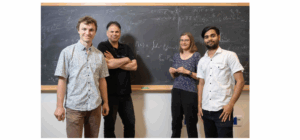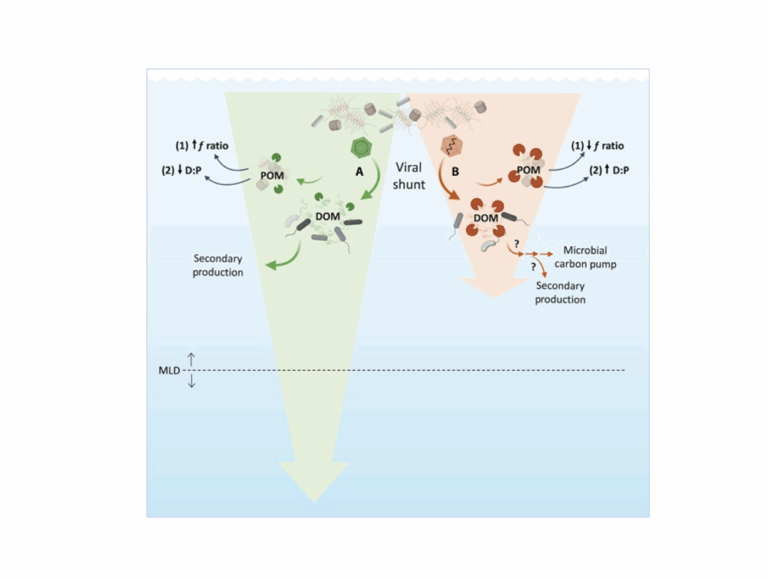Weizmann Institute: Nuclear clock quest spins off a new dark matter detection method

For nearly a century, scientists around the world have been searching for dark matter – an invisible substance believed to make up about 80 percent of the universe’s mass and needed to explain a variety of physical phenomena. Numerous methods have been used in attempts to detect dark matter, from trying to produce it in particle accelerators to searching for cosmic radiation that it might emit in space. Yet even today, very little is known about this matter’s fundamental properties. Although it operates in the background, dark matter is believed to influence visible matter, but in ways so subtle that they currently cannot be directly measured.
Scientists believe that if a nuclear clock is developed – one that uses the atomic nucleus to measure time with extreme precision – even the tiniest irregularities in its ticking could reveal dark matter’s influence. Last year, physicists in Germany and Colorado made a breakthrough toward building such a clock, using the radioactive element thorium-229. When researchers in Prof. Gilad Perez’s theoretical physics group at the Weizmann Institute of Science learned of this achievement, they recognized a new opportunity to advance the search for dark matter, even before a fully functional nuclear clock becomes a reality. In collaboration with the German team, they recently published a study proposing a novel method for detecting dark matter’s influence on properties of the thorium-229 nucleus.
Much as pushing a child on a swing requires the right timing to maintain a smooth, consistent motion, an atomic nucleus also has an optimal oscillation frequency, known in physics as its resonance frequency. Radiation at precisely this frequency can cause the nucleus to “swing” like a pendulum between two quantum states: a ground state and a high-energy state. In most materials, this resonance frequency is high, requiring strong radiation to excite the nucleus. But in 1976, scientists discovered that thorium-229, a byproduct of the US nuclear program, was a rare exception. Its natural resonance frequency is low enough to be manipulated by standard laser technology using the relatively weak ultraviolet radiation. This made thorium-229 a promising candidate for the development of a nuclear clock, in which time is measured by the nucleus “swinging” between quantum states like a pendulum in a traditional clock.
“A nuclear clock would be the ultimate detector – capable of sensing forces 10 trillion times weaker than gravity, with 100,000 times the resolution of today’s dark matter searches”
However, progress on the nuclear clock stalled at the very first stage, when scientists tried to measure the resonance frequency of thorium-229 with the utmost precision. To determine a nucleus’s resonance frequency, physicists shine a laser on it at varying frequencies and observe how much energy it absorbs or emits while transitioning between quantum states. From these results, they construct an absorption spectrum, and the frequency that causes peak absorption is taken as the nucleus’s resonance frequency.
A fluorite crystal containing atoms of the radioactive element thorium-229. It was used to precisely measure the absorption spectrum of atomic nuclei at the National Metrology Institute of Germany (PTB). In the past, researchers had to trap a small number of atomic nuclei in each experiment and test them with one radiation frequency at a time, which made precise measurements extremely time-consuming. In the PTB experiment, researchers used a crystal embedded with approximately one quadrillion (a thousand trillion) atoms, enabling many measurements to be conducted simultaneously using highly accurate laser beams. Credit: PTB
For nearly five decades, scientists were unable to measure thorium-229’s resonance frequency with enough precision to build a nuclear clock, but last year brought two major advances. First, a group at the National Metrology Institute of Germany (PTB) published relatively accurate measurements. A few months later, a team from the University of Colorado released results that were several million times more precise.
“We still need even greater precision to develop a nuclear clock,” says Perez, “but we’ve already identified an opportunity to study dark matter.” He explains: “In a universe made up only of visible matter, the physical conditions and the absorption spectrum of any material would remain constant. But because dark matter surrounds us, its wave-like nature can subtly change the mass of atomic nuclei and cause temporary shifts in their absorption spectrum. We hypothesized that the ability to detect minute deviations in the absorption spectrum of thorium-229 with great precision could reveal dark matter’s influence and help us study its properties.”
Theoretical calculations made by the team – led by Dr. Wolfram Ratzinger from Perez’s group and other postdoctoral fellows – showed that the new measurements could detect dark matter’s influence even if it were 100 million times weaker than gravity, a force that is itself weak and rarely crosses our minds in daily life. “This is a region where no one has yet looked for dark matter,” says Ratzinger. “Our calculations show that it’s not enough to search for shifts in the resonance frequency alone. We need to identify changes across the entire absorption spectrum to detect dark matter’s effect. Although we haven’t found those changes yet, we’ve laid the groundwork to understand them when they do appear. Once we detect a deviation, we’ll be able to use its intensity and the frequency at which it appears to calculate the mass of the dark matter particle responsible. Later in the study, we also calculated how different dark matter models would affect thorium-229’s absorption spectrum. We hope this will ultimately help determine which models are accurate and what dark matter is actually made of.”
Meanwhile, laboratories around the world are continuing to refine the measurement of thorium-229’s resonance frequency, a process expected to take years. If a nuclear clock is eventually developed, it could revolutionize many fields, including Earth and space navigation, communications, power grid management and scientific research. Today’s most accurate timekeeping devices are atomic clocks, which rely on the oscillation of electrons between two quantum states. These are highly precise, but they have one significant drawback: They are vulnerable to electrical interference from the environment, which can affect their consistency. Nuclei of atoms, by contrast, are far less sensitive to such disturbances.
“When it comes to dark matter,” says Perez, “a thorium-229-based nuclear clock would be the ultimate detector. Right now, electrical interference limits our ability to use atomic clocks in the search. But a nuclear clock would let us detect incredibly slight deviations in its ticking – that is, tiny shifts in resonance frequency – which could reveal dark matter’s influence. We estimate it will enable us to detect forces 10 trillion times weaker than gravity, providing a resolution 100,000 times better than what we currently have in our search for dark matter.”
The European Research Council (ERC) recently awarded an ERC Advanced Grant to Prof. Perez’s group to support the continued development of this line of research. Also participating in the study were Prof. Elina Fuchs and Dr. Fiona Kirk from the National Metrology Institute of Germany (PTB), Braunschweig, Germany, and Leibniz University Hannover, Germany; Dr. Eric Madge and Chaitanya Paranjape from Perez’s group in Weizmann’s Particle Physics and Astrophysics Department; and Prof. Ekkehard Peik and Dr. Johannes Tiedau from the National Metrology Institute of Germany (PTB), Braunschweig, Germany.
Published in in Physical Review X





